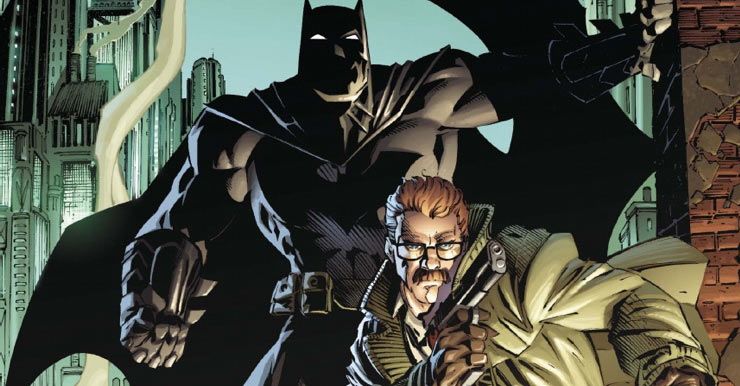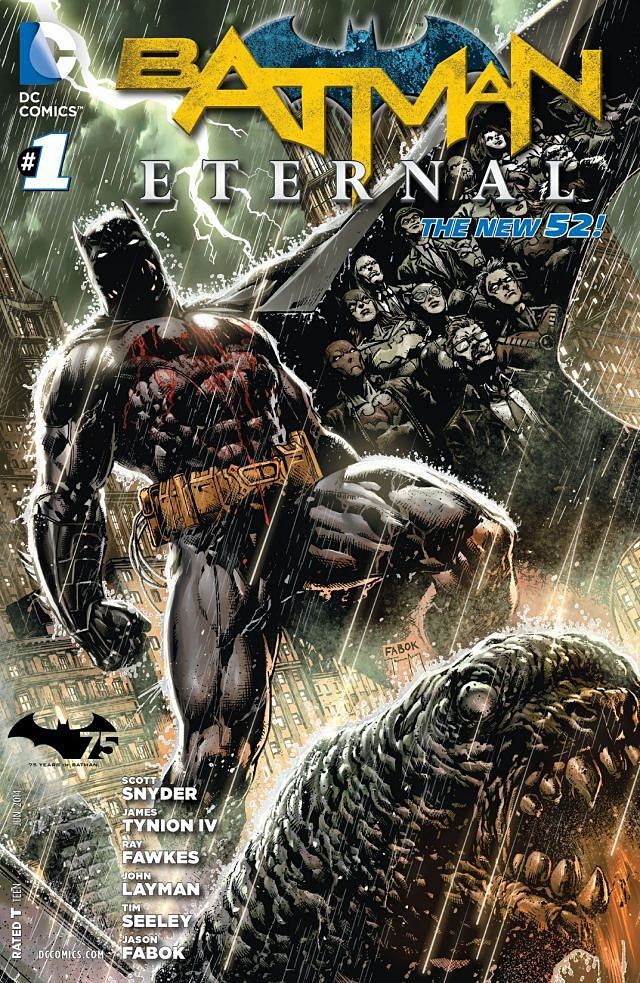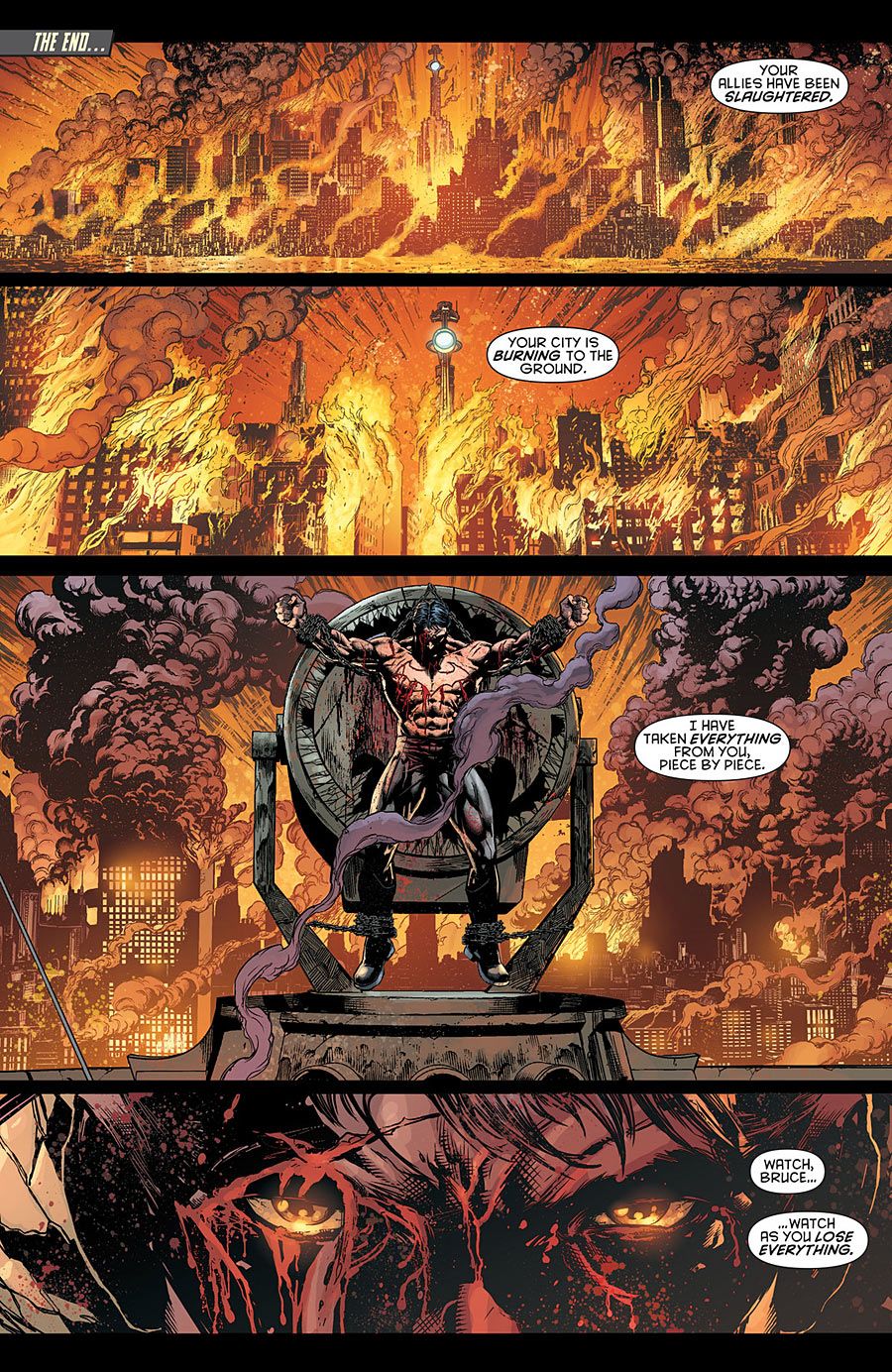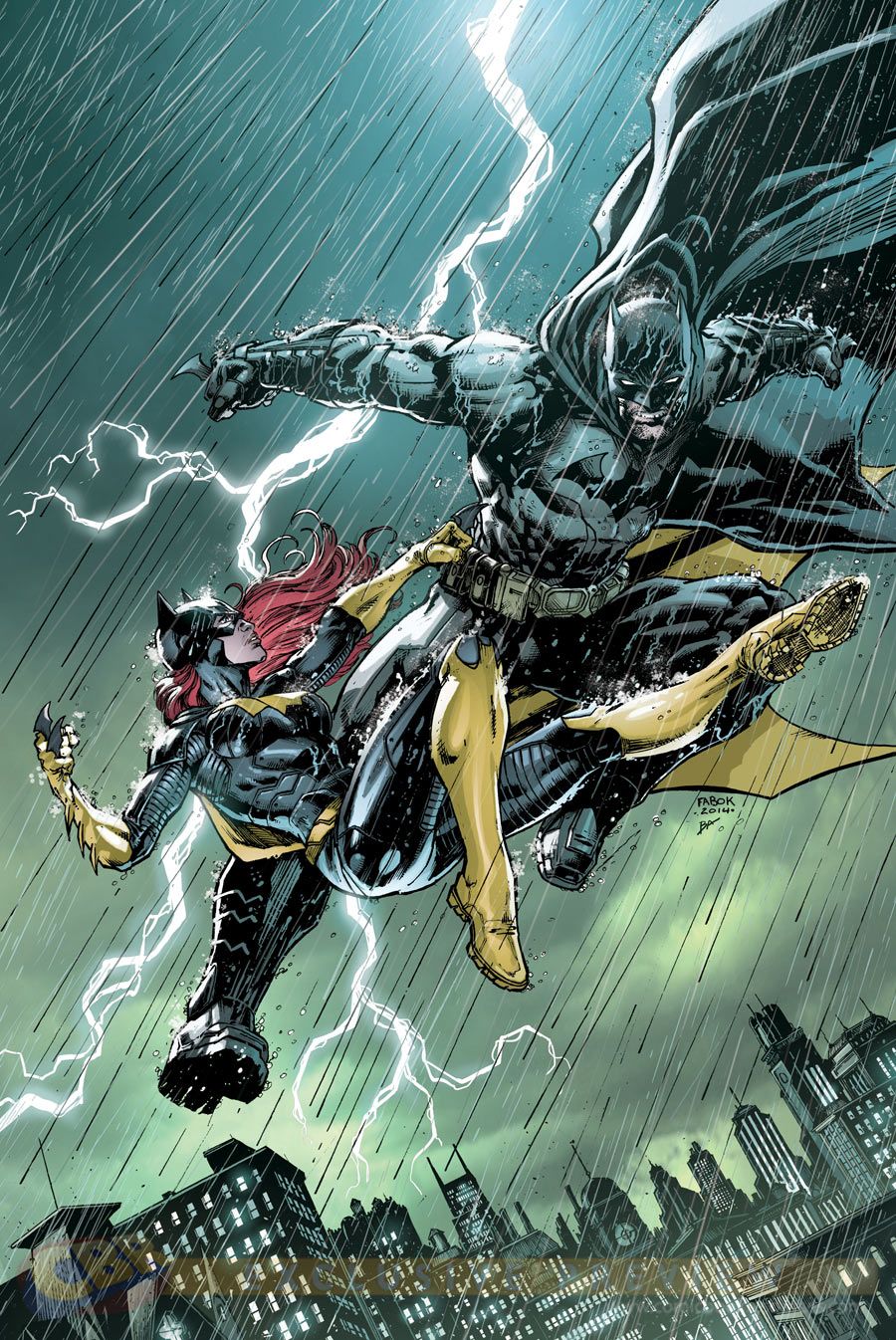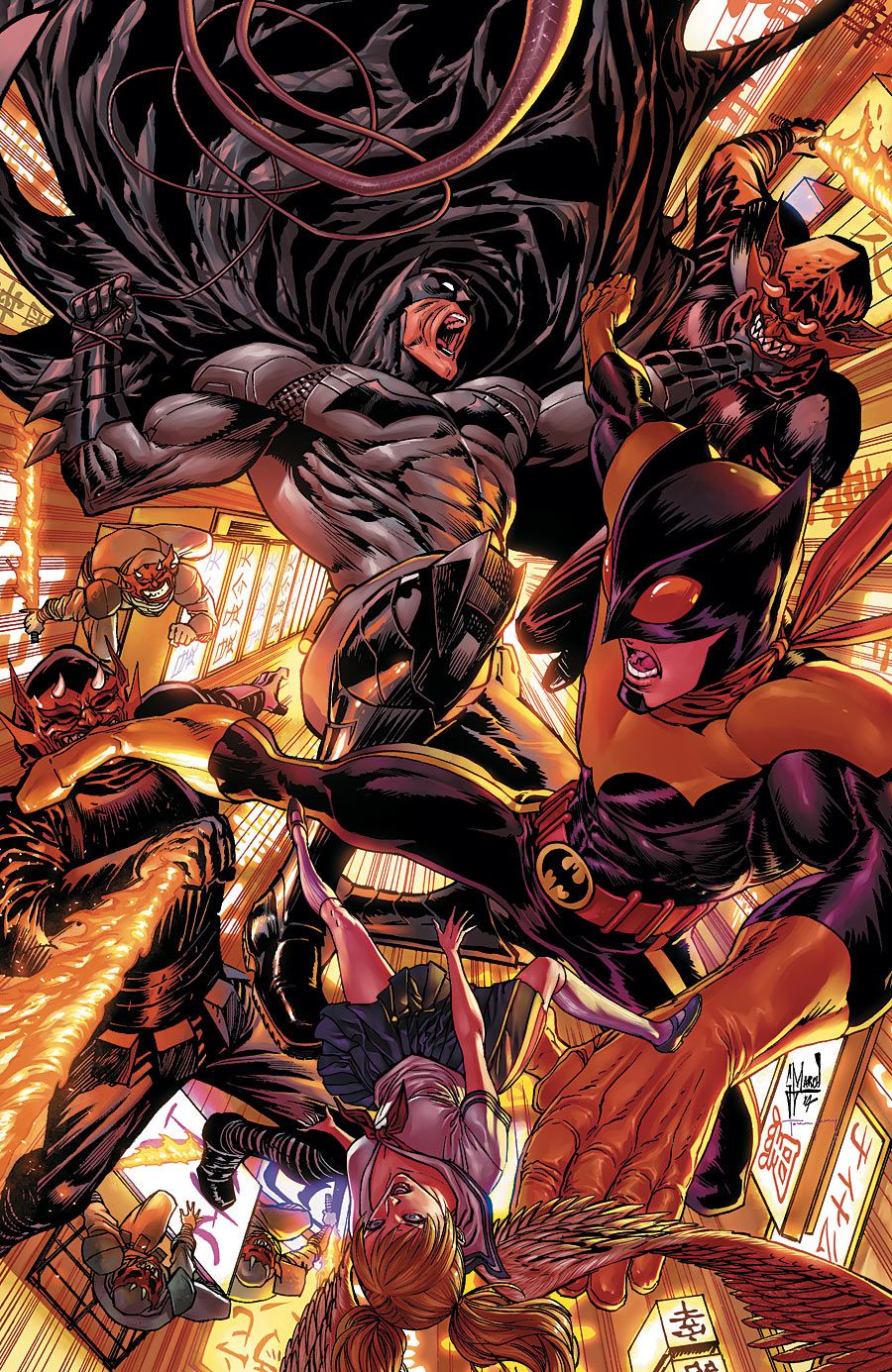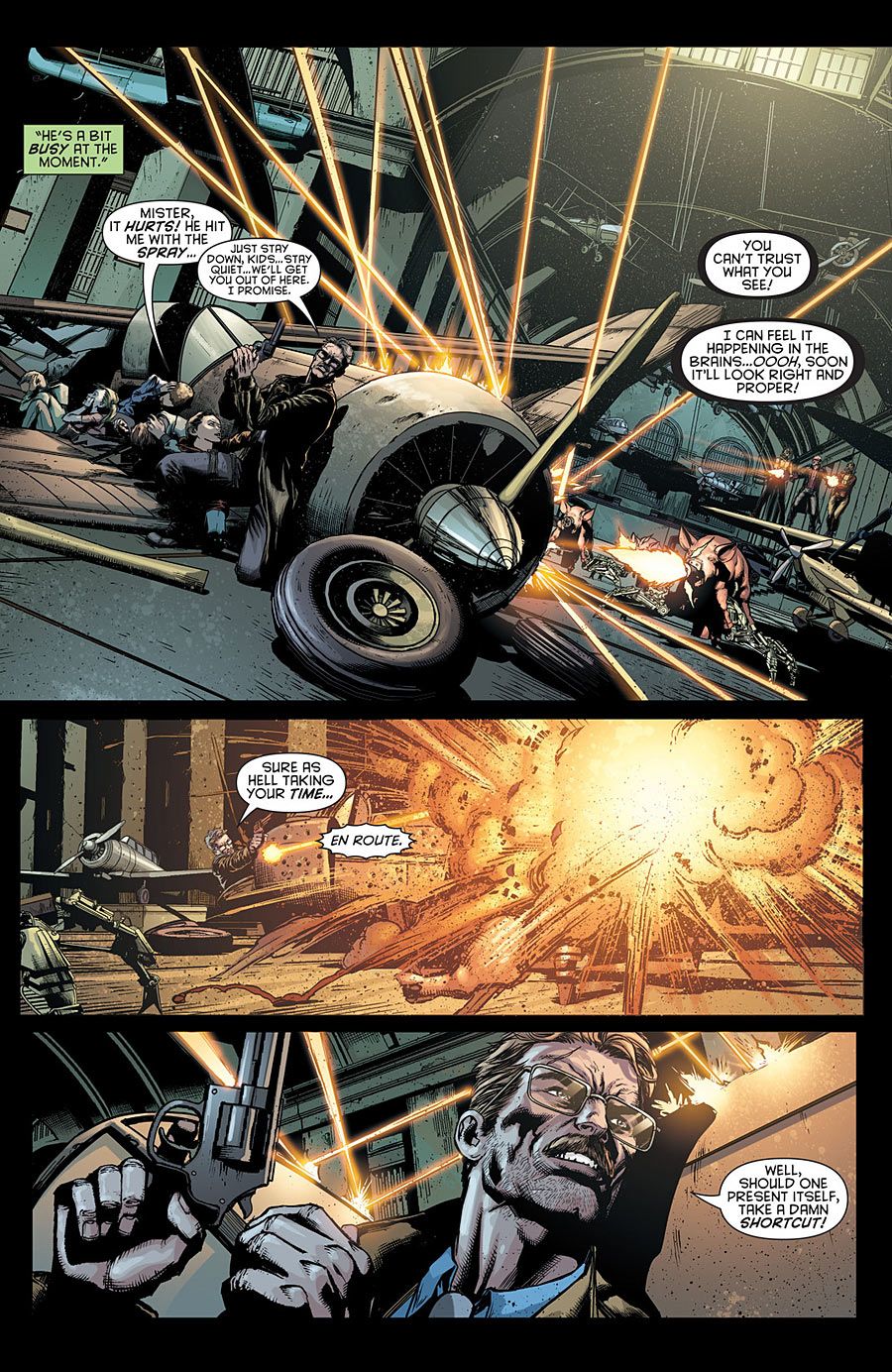Even with 75 years of stories behind him, the next 12 months are going to be particularly huge for Batman.
Today, DC Comics launched "Batman Eternal" -- a year-long, weekly comic written by a gathering of Gotham's top talent. Issue #1 features a script from Scott Snyder and James Tynion IV with art by Jason Fabok, and after the team's a three-part opening concludes, "Eternal" welcomes a writing team including Tim Seeley, Ray Fawkes, John Layman and Kyle Higgins, along with scores of artists to carry the book forward.
ECCC: Snyder and More Discuss "The Eternal Batman"
To gauge the scope of the book, CBR News spoke with Tynion and Seeley for our ongoing Dark Knight discussion THE BAT SIGNAL about "Batman Eternal" and the many mysteries, characters and stories the book has ahead. The pair discuss the origins of the project, Commissioner Gordon's critical role, the reintroduction of characters like Vicki Vale, the mix of genres that celebrate Batman's long history and much, much more.
CBR News: James, the first arc of "Batman Eternal" was written by you and Scott Snyder after you both broke out an outline for the entire year-long series. What was it like to see this story change and take shape once it was actually being written in full script form?
James Tynion IV: We first started talking about this about a year ago, and we weren't sure for a while when it was going to happen or if it was going to happen. But the core idea from the very beginning -- and what stayed true as we got the green light and went full speed ahead -- was, actually, the events of the first issue. That was the first moment we came up with. If we were going to do this, we knew we needed to start with something that radically changed Gotham City in a single moment. It had to be something with ramifications that would last a whole year and make the city so dangerous and crazy right off the bat that readers would have no idea what to expect. When we sat down to talk about it, we knew that's the kind of moment we wanted, and we had to build the story out of the Commissioner Gordon/Batman relationship. That's where the moment comes from, and people can guess what that means before they get the issue, but it will really change things for Batman and how he operates in Gotham City.
On the flipside of that, Tim, you came in after the initial groundwork had been laid. So what was it about this story that engaged you or made you feel like it was a unique event worth participating in?
Tim Seeley: I think I came onto the team last, and by then, they'd figured out most of what was happening. What appealed to me was that they said, "It's been 75 years of Batman. We want to celebrate that with a year-long story that deals with what an important piece of pop culture, comics and superhero history he is." To do that, they wanted to explore everything that Batman can be. I really liked the idea that James and Scott had a story, but that in each part of the year-long mystery, we'd get to explore the different genres that Batman is. So there's an action adventure story. There's a mystery story. There's a horror story. There's a science fiction story. And it also involves this cast of characters that has evolved from the main hub of Batman and have become very important spokes in the overall story. It was about going into a Batman story and saying, "This is a series about everything that makes Batman such an eternal, enduring concept."
Let's talk about the cast of the book overall. Especially in the modern era, you're almost never telling a big Batman story without telling a big Bat Family story. We've got some new faces in that bunch -- some brand new characters, and some new to the New 52 -- as well as some changes in status for established players. What was the overriding ethos behind how that broad cast would work in this series?
Tynion: I think the biggest thing is that we knew we wanted to show the larger Gotham. In the New 52, we've had a couple of Bat events where we've seen the characters touch on each other, but we haven't seen them working as the Bat Family to solve one larger mystery -- not even all together but all as a part of one interconnected story and world. That was a key piece we wanted in the series.
And we have a great opportunity in "Batman Eternal" to dig into some of the smaller characters who you're very unlikely to see have their own comic book series. One of the major characters we're bringing into "Batman Eternal" #1 is, we're bringing [classic Gotham cop] Jason Bard into the New 52 continuity as a new recruit. He's our entry point to the entire Gotham Central storyline that will run through the full year. You'll see in the first issue why that storyline is so central. But we also have, in issue #2, the introduction of Vicki Vale, who is going to be another very key figure throughout the whole year. A story with the scale of "Batman Eternal" lets us explore the smaller corners of the DCU and of Gotham City.
We also get to have characters cross paths or let them interact with characters they never have before. That was the name of the game when we were coming up with all the different subplots: Who are the characters we want to pair together? One of the big discussions we had at our first summit was centered on that. For instance, I'm writing a lot of a storyline that's centered on Tim Drake and Harper Row, which will lead to the events of "Batman" #28. Ray is mixing together Batwing and some of the strangest supernatural characters of the DC Universe. It's a lot of fun, showing off characters we haven't seen in the New 52 yet.
Seeley: I really liked the way we did this. Everyone is writing Batman because obviously, he's Batman. But beyond that, everyone gets to be the "lead" on a different set of characters and see them through to the end. In my case, I get to be the lead on this Batwoman/Batgirl/Red Hood storyline, which is an action adventure story that weaves throughout, with some espionage and worldwide adventure hopping stuff. And because we're allowed to weave in characters we want to play with, I kept with my whole "Monsters and Dames" idea and picked up the Catwoman story, since she's a character I like, and then, of course, I stuck Killer Croc in there.
We get to play the lead on those stories while saying to the other writers, "What do you need to set up your story?" So James will call me and say, "Can you set up this Harper and Jason story?" and I say "No problem. Here's two pages you can follow up on." We're all weaving our stories into the larger whole while working together to follow up on each others' storylines.
It's really all about where we want to take the individual relationships. I'm really excited about setting up Jason Todd/Red Hood and Batgirl. I'm explaining what their history is now. Jason is this anti-Robin who's quick to pull out a gun and shoot somebody in the face. Batgirl is obviously very moral, the rock of the Bat Family. You put them together, and you can make people care about them amidst this great adventure. That's my favorite thing about it, and my Catwoman story functions in much the same way. How is she involved in this world, or what about her keeps her in this story as both an ally and a villain?
Well, on the flipside of that team-up element are teases, like the just revealed cover showing Batman and Batgirl at odds. Are you looking to break some of the ties that bind the Bat Family in this story as well?
Tynion: Oh, absolutely!
Seeley: I think a big part of what we wanted to play with was kind of the dynamics of what Scott did in "Death of the Family." That story was about the Bat Family and what they do for Batman. This story is more about what he means to them and what do those ties stand for when they're tested. Obviously, we want to see our superheroes fight each other, because that's cool. [Laughter] But we also want it to make sense for who they are as people.
Tynion: I think that, right from the start, we have these characters who, between "Death of the Family" and "Forever Evil," and really, from corner-to-corner of the DCU, have had a lot of distrust building amongst them since the start of the New 52. We're seeing a lot of that boil over in "Eternal." From the start, the Bat Family isn't going to be this perfect unit that comes together all buddy buddy. Batgirl's not going to be too happy when she first bumps into Jason Todd. I don't think Tim Drake is going to be too happy when Batman starts showing up and looking over his shoulder as he tries to get his job done. And that says nothing about how Batgirl will react to the nice things we have planned for her father in this series. There are a lot of conflicts bubbling up in this series that you'll be seeing as the series runs through its first act and beyond.
Seeley: I think it's also important to note that not all these Bat characters are the same. They don't all have the same motivations. Maybe they're unified on one very important front, but because of those different motivations, they come into conflict. That helps differentiate what different people they are. There's a reason why Tim Drake isn't just your average Robin. There's a reason why Batgirl is different than Red Hood. You'll get to see all of that displayed in this series.
Issue #1 opens up with a striking image of Bruce Wayne broken and tied to a shattered Bat Signal. Obviously, that comes from the end of this year-long series, so there's not much to say about that, but we do at least know that there is someone taunting him as he's in this spot. Can we assume there's one great force or villain behind everything we're going to be seeing this year?
Tynion: I think that's going to have to be a "Wait and see." [Laughs] This is a story where we're going to play with all of your favorite villains at some point. I don't want to say that there are singular machinations behind this all, but there is a certain intent that goes from the very first issue to the end, and that's focused on Bruce Wayne and Batman.
The one thing I'll say about that first page is that the thing readers should keep an eye out for is this tower which we'll see built over the course of the year. It's a part of the main renewal project that Scott introduced in his first issue of "Batman." He wanted to create a new skyscraper as part of the Gotham skyline, and it's called the Beacon Tower. On that first page, it's the tower we focused in on at the very center of panel one, and you'll see beyond that it being half constructed as part of the Gotham skyline. As that gets closer to its final form, we're getting closer to the end game.
But the person who may or may not be up there with Batman? You'll be finding that out in about a year.
Two of the main artists working on the series are Jason Fabok and Dustin Nguyen, and while they've each been contributing a lot to Batman over the past few years, they're also wildly divergent in their style. How does that variety play into what the plan for "Eternal" is?
Seeley: Knowing that we have all these different genres in this story, one of the things we've discussed is that when artists come up and [Editor] Katie [Kubert] is finding who will draw what issue, we'll chime in and go, "That artist will fit this particular genre." Dustin's name will come up as being able to do a loose, creepy horror arc, and we've seen a lot of the artists that will be working on the series that you haven't. I think we can say that this will look different than any Batman book that's come before, and that's awesome. A lot of the artists we're working with are surprising. You could try to do a year-long series where the art always looks the same, or you could embrace the idea that this is a series about all the different ways this character can act and look. We erred on the side of making it unique and fun, jumping between genres and style and storytelling.
Tynion: I think that was one of the key things. It's hard to answer this question because we know the artists who are drawing at least half of this series. It's a pretty cool list of names,both on the cover side and on the interiors. At the beginning, we were all throwing out the names of people who draw some of our favorite Batman stories -- the people we wanted to work with most and the artists we were most excited by. The fact that we've gotten most of them is amazing. I love seeing what Jason has done on the series, and he's in the front seat. He'll be doing a lot of the key moments in the series. But everyone else is just bringing this incredible range of styles. Like Tim said, it's stuff you wouldn't expect on a series like this. I can't wait for readers to see what we've got in store.
Seeley: One of the craziest parts of this is that I'll get art in from two different scripts I've written at the same time. It's a whiplash thing, even for me, so it's going to be a blast for readers to go from an issue by Jason and then into something completely different.
And will you be drawing any of this book yourself, Tim?
Seeley: Well, I'm not sure about that!
Tynion: But you have been. You've been doing a bunch of character stuff for it. It's great to have someone on the team who can contribute like that.
Seeley: Well, when we started doing this, I think everyone felt like "Here's the guy who writes 'Revival,'" but no one was saying, "Oh he's also the guy who drew 'G.I. Joe' for two years, ten years ago." But as we started going, I just kind of said, "If you need this, I drew this design. I do have some experience with this sort of thing." And that works because, with so many artists, sometimes you need someone to go in before them and design a character since all these poor artists have to be drawing them at the same time. So I got to redesign some characters and then see them interpreted by these artists. That's blowing my mind. But it's easy for me to sit down at the drawing board and say, "Here's the New 52 version of this dude. We're good to go."
With #1 out this week, we've got a whole year of stories out ahead of us. What question do you think readers should be asking themselves about this series at the start?
Seeley: I think the fun part is that they'll be reading this almost as a challenge to us. They'll be getting issues and going, "How are these dudes going to make this work?" That's a great question because I think we're going to make it work, but the task is to tell a weekly Batman mystery story for a year where you keep the excitement up all the way. I want the readers to challenge us to do that. How are these diverse styles of writing and art going to work? That's a huge part of the fun.
Tynion: One of the big goals of the series was, "How much can we break Gotham City and change everything in these massive, terrifying ways but also stay true to the character of Batman and how flexible that mythos is?" We're setting the stage for a whole new generation of stories with a whole new generation of characters. From reintroducing Stephanie Brown to other characters we can't event start hinting at, that's been crazy. There's a character we're bringing in around the second or third month, and when Ray first brought up the fact that we could draw her in, everyone went, "Wait. What are you talking about?" And then as soon as we realized what we could do with her, it completely changed the game for the entire series.
So I think the big question is "How different can Gotham be?" You saw a hint of that in "Batman" #28, and we want to get people really excited about seeing new stories with the Bat characters that they've never seen before. This is the series that sets the stage for all of that, and it'll bleed out into the rest of the Bat line. I'm super excited for people to see what we've been up to.
Seeley: It's been so long for us! I started talking with these guys about this last year at San Diego Comic-Con at the Tiki Bar. From then until now, we've written some 30 issues of this thing already. I think I'm on my eighth Batman script next week.
Tynion: And now we're entering the end game as soon as everyone's starting to read it!
Seeley: It's weird, but exciting.
"Batman Eternal" #1 arrives today from DC Comics.

